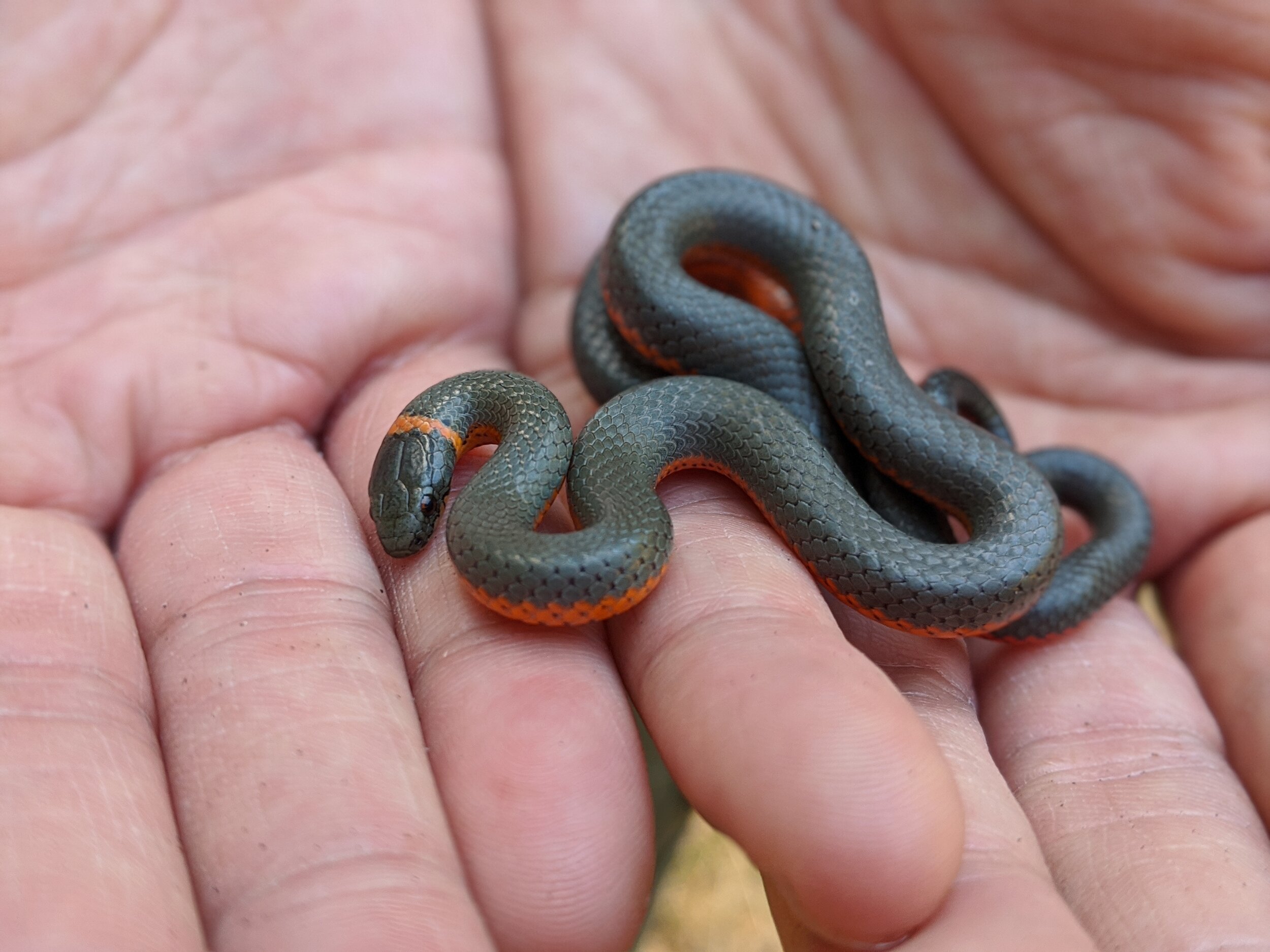
a series
of snakes
Snakes are easily one of the most misunderstood animals in the outdoors. While there are hundreds of different snakes species that call North America home (at least 50 of which reside in the United States), only a small percentage of them are venomous. It is the reputation of this small percentage that effects the entire group, promoting the general public conception that snakes are “bad” and should be killed on sight. Snakes, both venomous and non, play important roles in maintaining healthy ecosystems.
Read below about two snake species that are native to the United States & view a variety of pieces, in various mediums, that depict their beauty and character:
pacific ring-necked snake
The species Diadophis punctatus - ring-necked snake, has a very wide range, occurring throughout the United States and into Mexico. Diadophis punctatus amabilis, commonly known as the pacific ring-necked snake is a harmless sub-species of colubrid snake that is endemic (native & restricted) to California. They tend to be secretive, often hiding under rocks, wood, or other surface debris- though, they can occasionally be seen moving about on cloudy days, around dusk, or at night. While they are considered harmless to humans, they do have a mild venom that can be used to incapacitate their prey, which usually consists of small salamanders, slugs, and worms. When disturbed, these snakes coil their tails like a corkscrew, exposing their underside, which is usually bright red/orange coloration.
southern hognose snake
Endemic (or, native & restricted) to the American Southeast, the Southern Hognose snake, Heterodon simus, is a small colubrid that is listed as Vulnerable by the IUCN due to diminishing populations. The common name “hognose” refers to the upturned rostral scale located at the snout, which draws comparisons to that of a pig’s nose. This shovel-like scale aids this snake species in digging and burrowing underground. Frogs, particularly toads, comprise the bulk of the Southern Hognose snake’s diet, which are subdued by a mild venom delivered by the enlarged rear fangs located in the back of the snake’s mouth. When threatened, this species (along with other members of the Heterodon genus) will often roll over onto their backs and play dead!
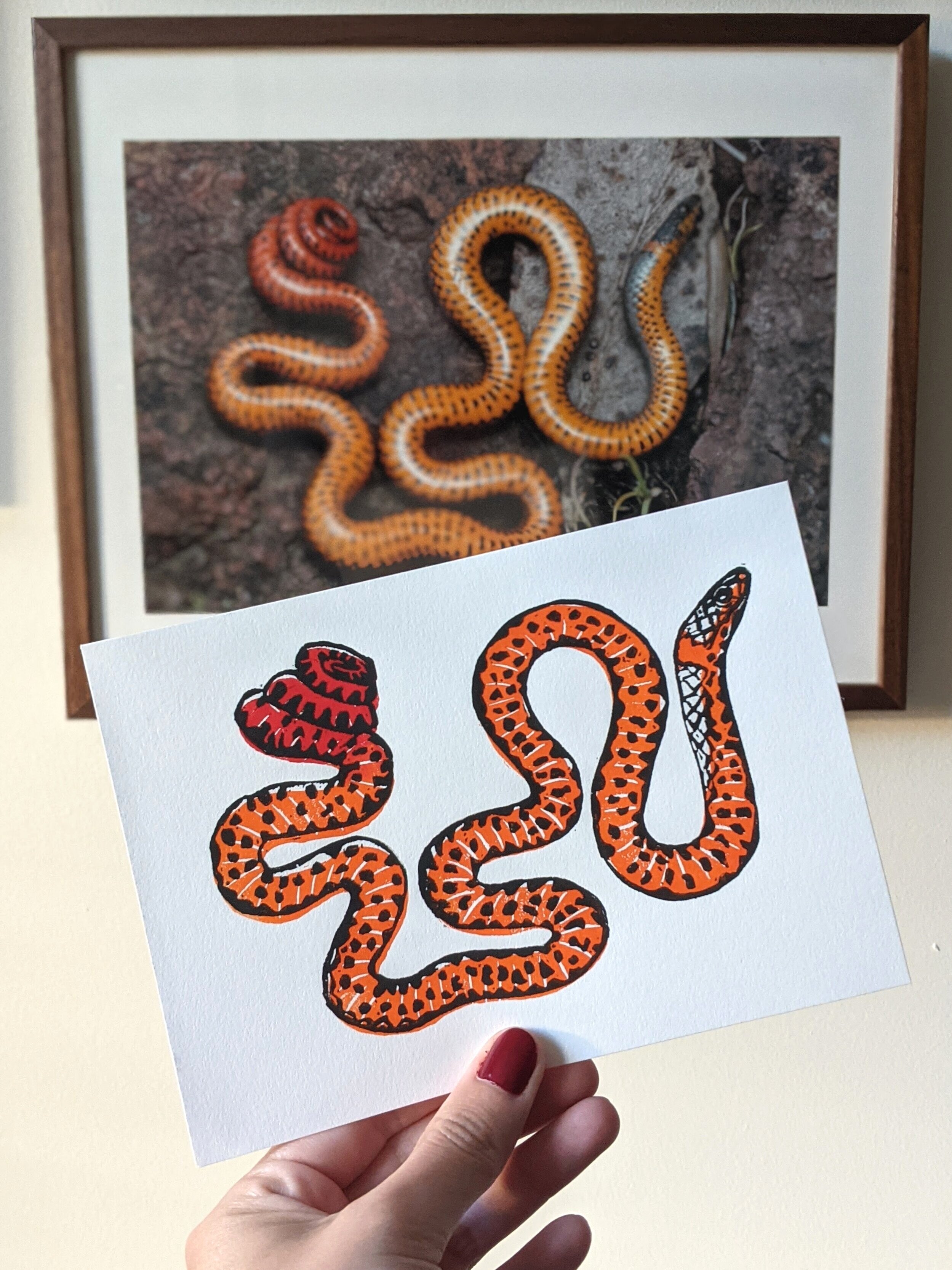
Pacific ring-necked snake blockprint
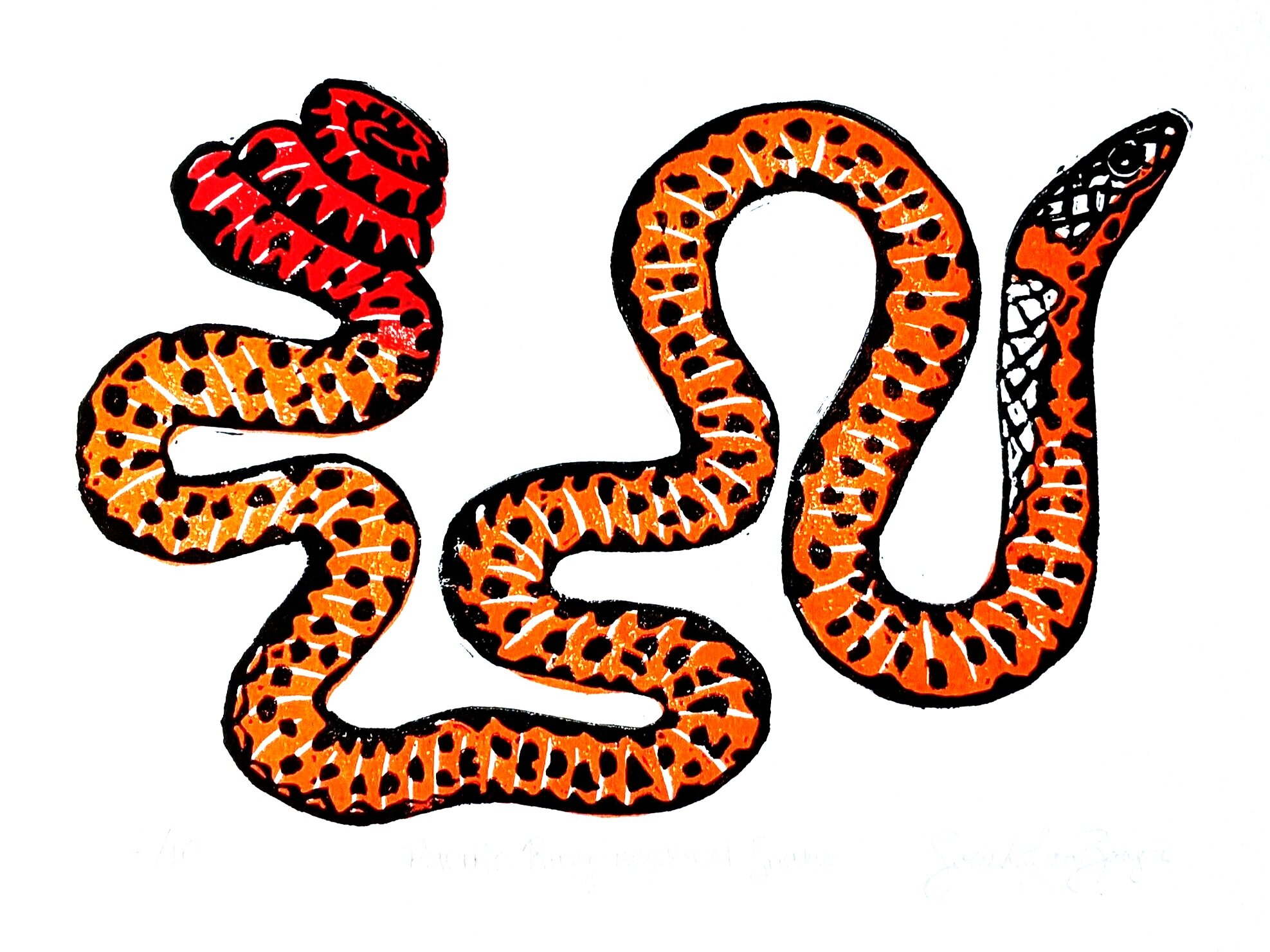
Pacific ring-necked snake blockprint

Pacific ring-necked snake finished blockprint, carved linoleum blocks, and carving tool
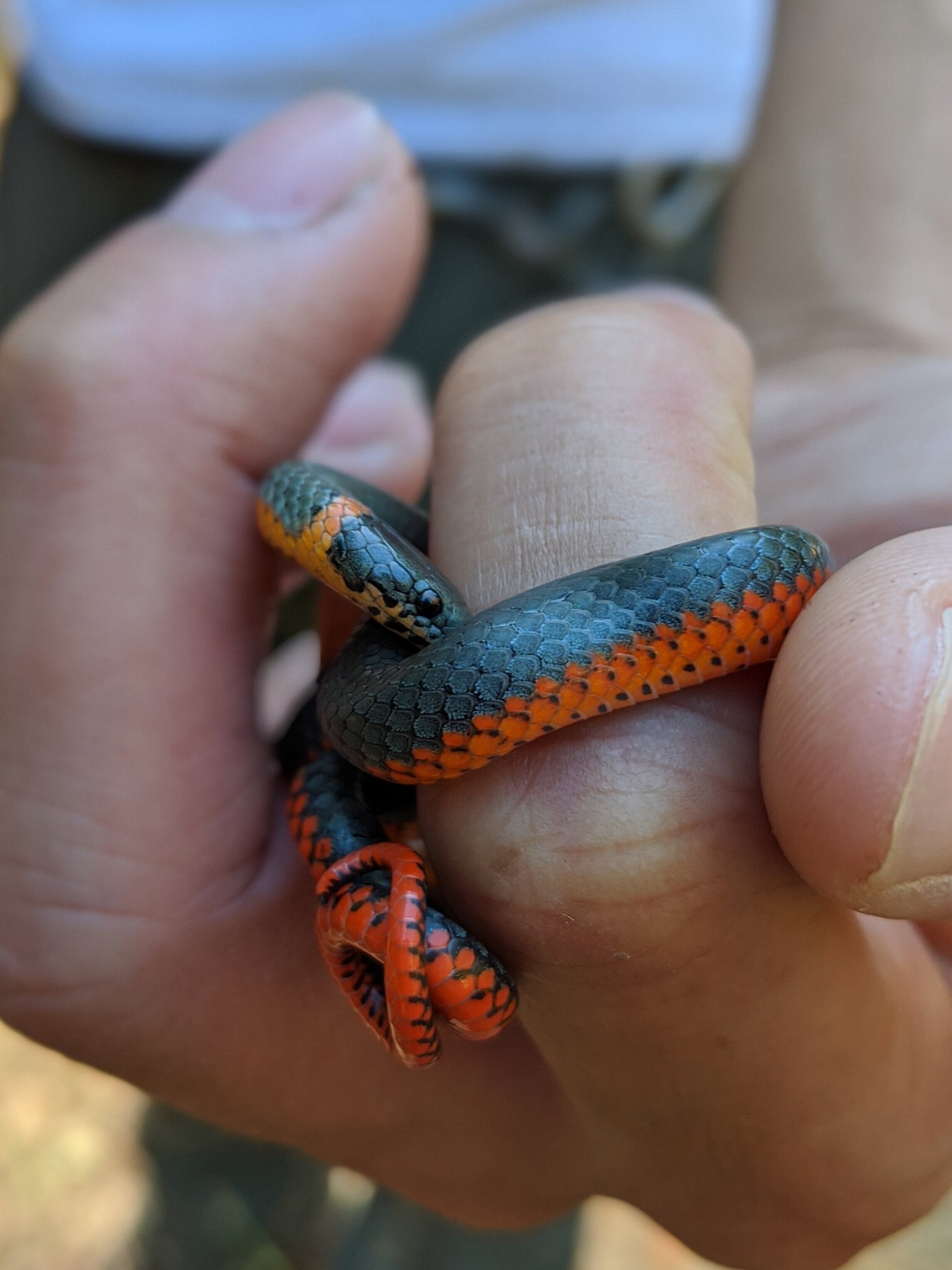
Pacific ring-necked snake (Diadophis punctatus amabilis)

Pacific ring-necked snake (Diadophis punctatus amabilis,)
Pacific ring-necked snake, pen & ink drawing on bristol paper
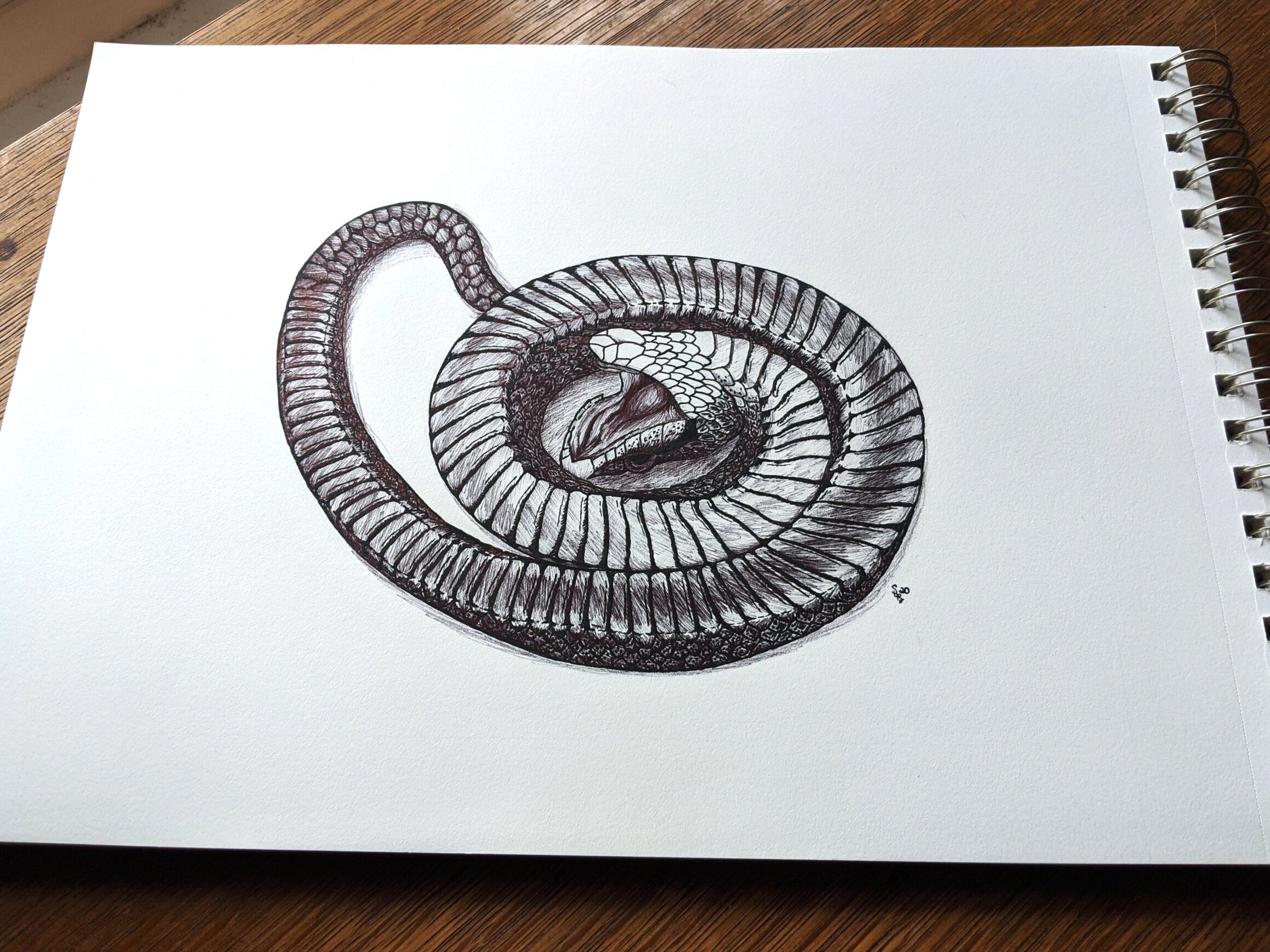
Southern Hognose snake, pen & ink drawing
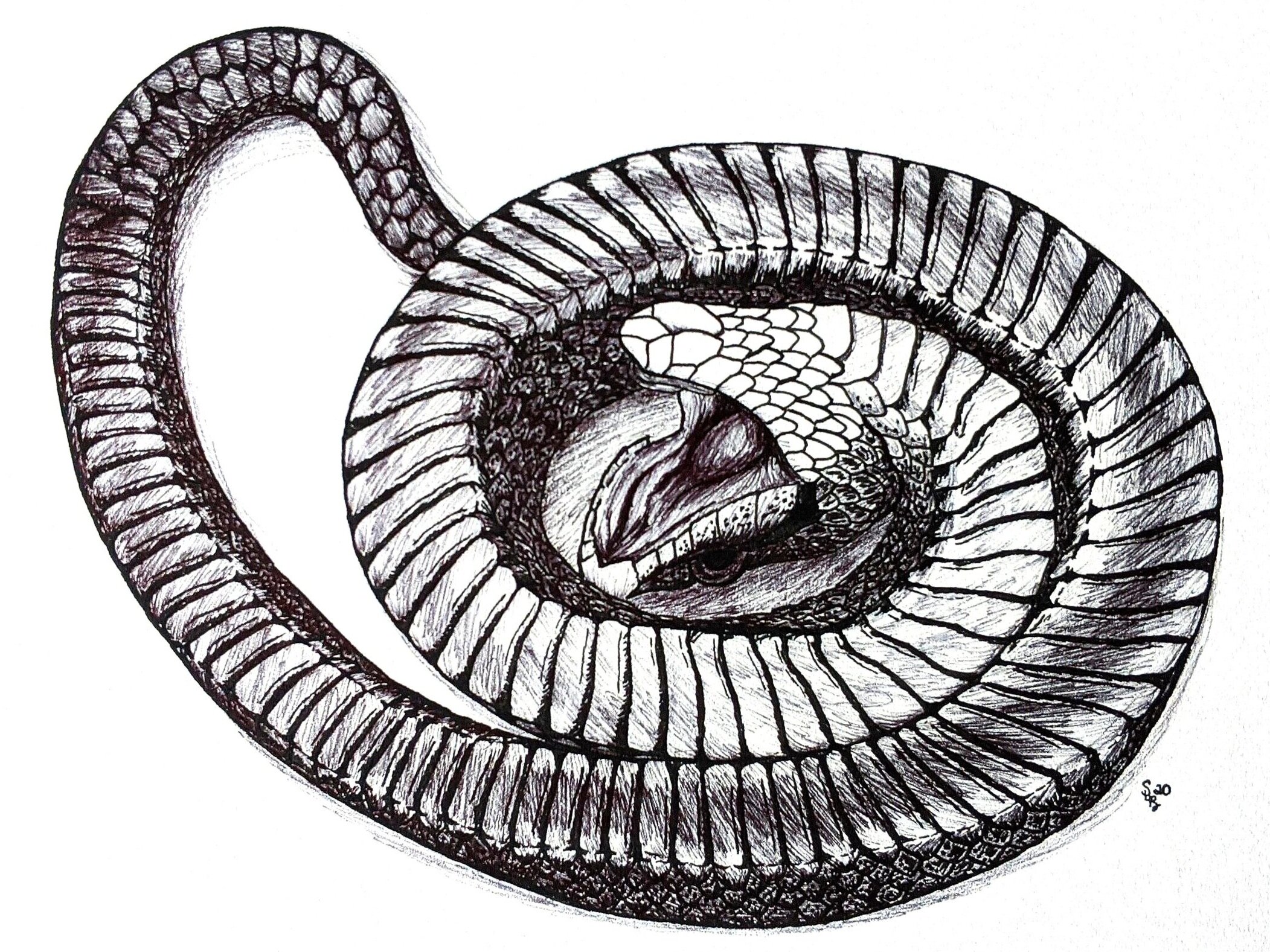
Southern Hognose snake, pen & ink drawing

Southern Hognose snake (Heterodon simus), photo by Zachary Lim, @zacharge
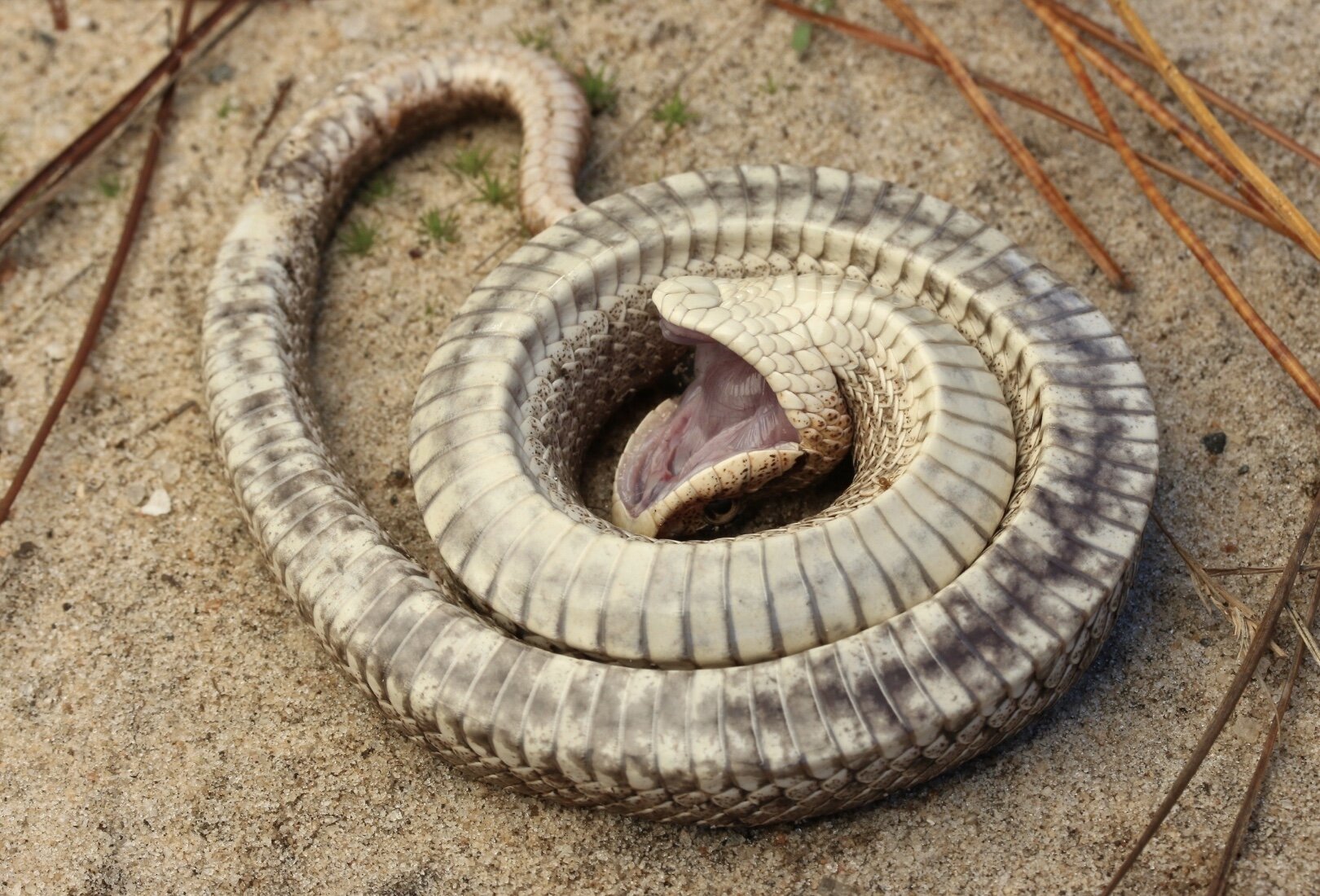
Southern Hognose snake (Heterodon simus) feigning death, photo by Zachary Lim, @zacharge
